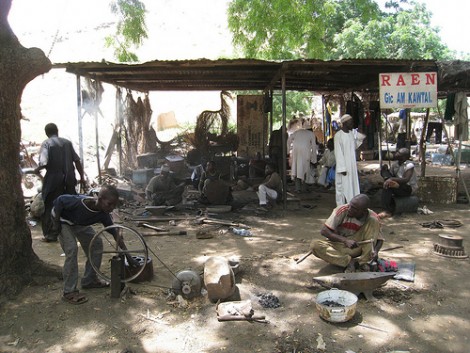
[Richard’s] community in Kenya had a problem. The people depended on local livestock for survival, but the local lion population had started consuming that very same food source. The result was that people suffered from loss of the livestock, but the lions also suffered when the people killed them to protect their source of food. [Richard] knew he could do something to help both his community, and the lion population. He ended up building a lion attack prevention system.
He first tried a sort of scarecrow, to keep the lions away from the cattle. Unfortunately the lions proved to be too “tricky” and quickly realized that the scarecrows were no threat. Then one day, [Richard] was working with a flashlight. This led him to realize that the lions seemed to be afraid of moving light. That gave him the idea for his invention.
He had previously taken apart his mothers new radio, much to her dismay. He learned a lot about electronics in the process. He combined his electronics knowledge with this new knowledge about lions, to create his lion attack prevention system. The core component is the turn signal circuit from a motorbike. The circuit is hooked up to a rechargeable battery and a solar cell. This all runs through a switch so [Richard] can turn it on only when needed. The circuit is switched on at night to keep the lions away. [Richard] claims that they have experienced no lion attacks since the system was put in place two years ago!
This protects both the local cattle as well as the lions themselves. The whole thing is powered from the sun, so it’s likely to last a very long time. This kind of project may seem simple to many readers, but it’s a great example of the good ideas and ingenuity that can grow out of necessity. Oh, did we mention that [Richard] is only 13 years old? His invention is now reportedly being used all over Kenya and has led [Richard] to receive a scholarship to what he calls “one of the best schools in Kenya”.
While this hack has clearly changed the lives of many people in [Richard’s] region. You don’t have to make something overly complicated to change the world.
Continue reading “Kenyan Teen’s Invention Protects Cattle And Lions”



![article-1212214-0659F596000005DC-336_468x324[1] article-1212214-0659F596000005DC-336_468x324[1]](http://hackaday.com/files/2009/09/article-1212214-0659f596000005dc-336_468x3241.jpg)










